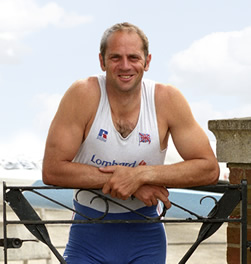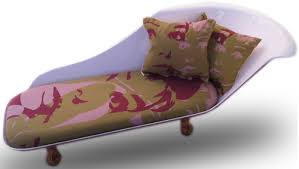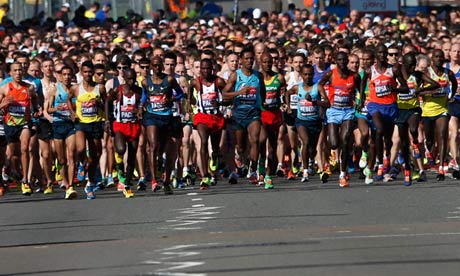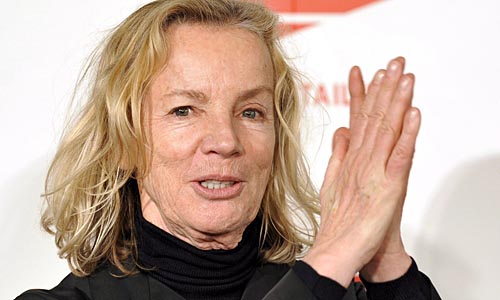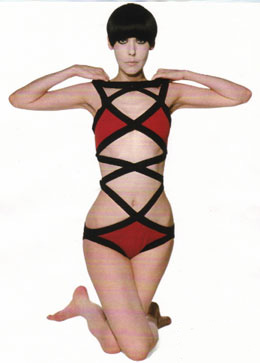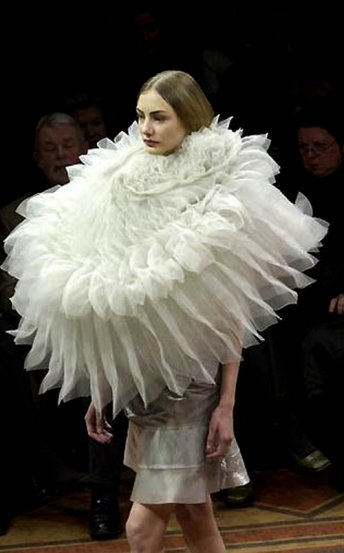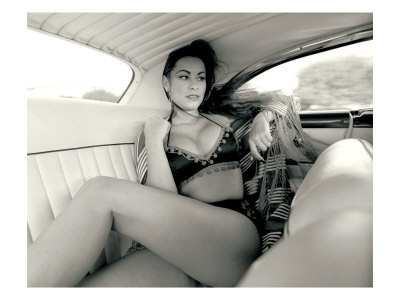The art and fashion worlds are increasingly overlapping, as designers become patrons, shops become gallery spaces and art becomes fashion’s new marketing tool. By Alice Rawsthorn
Back in the early Eighties when Tom Ford was a part-time student and actor kicking around New York and Los Angeles, he’d scour flea markets and thrift stores for furniture by Charles and Ray Eames, and other mid-century modernists. “I found my first Eames pieces, a couple of ply chairs, at garage sales in LA,” he recalls. “Their work wasn’t coveted then, and certainly didn’t come up at auction — not that I’d have been able to afford it anyway.”
Cut to an evening this autumn at the Design Museum in London, where Ford — now creative director of Gucci and proud possessor of “at least 70 Eames pieces; I’ve even got that silly coat rack with plastic balls at the ends” — is welcoming David Bowie and Bryan Ferry to the opening reception of a Charles and Ray Eames retrospective sponsored by Gucci. The more photogenic members of the Lock, Stock And Two Smoking Barrels cast are downing champagne and sniggering at Gucci’s improbably pretty canapes, while Sharleen Spiteri of Texas checks out a model of the Eames’ glass house at Pacific Palisades, and the paparazzi snap Ewan McGregor, who’s looking uncharacteristically natty in an outfit by, well, just guess what’s on the label.

Gucci isn’t the only fashion company toying with the world of art and design. Hugo Boss has endowed the Hugo Boss Prize for Contemporary Art at the Guggenheim Museum in New York, and Calvin Klein sponsors the Dia Center in the same city. Yves Saint Laurent paid £1 million to re-christen Room 220 of the National Gallery the YSL Room. A retrospective of the work of the surrealist Meret Oppenheim, now at Palazzo delle Stelline in Milan, is sponsored by Jil Sander; and, on nearby via Spartaco, there’s a show of video and photography by British artist Sam Taylor-Wood at Fondazione Prada, the art gallery bankrolled by Miuccia Prada.
There’s nothing new in the idea of designers having a close rapport with artists, as friends or collectors. Think of Paul Poiret hanging out with Raoul Dufy and Robert Mallet-Stevens in the Twenties; Elsa Schiaparelli’s collaborations with Jean Cocteau and Salvador Dali in the Thirties; or Andy Warhol’s early Seventies trips to Paris, where he spent his days “antiqueing” with Karl Lagerfeld, and his nights at Club Sept with Yves Saint Laurent. Warhol’s portraits of Saint Laurent and his dog, Moujik, now hang on the walls of the designer’s rue de Babylone duplex alongside works by Matisse, Mondrian, Picasso, Brancusi, Burne-Jones and Goya.
The difference these days is that designers are fusing their personal interest in art with their professional activities to promote and define the image of their brands. Mario Sorrenti shot a Rive Gauche-clad Kate Moss posing as Manet’s Olympia for Yves Saint Laurent’s autumn advertising campaign. Flick through a recent issue of Artforum, the influential US art magazine which featured Issey Miyake on its cover back in 1982, and you’ll see ads for Helmut Lang, Prada, Miu Miu and Jil Sander alongside others for museums and galleries. “Why place ads in magazines like Artforum? First of all, we like them,” explains Jil Sander. “Beyond that, their readers appreciate innovation, they’re interested, open-minded and potential trendsetters. We all know fashion is business too.”

Rei Kawakubo of Comme des Garcons was in the vanguard. For years she has commissioned artists to create Comme’s advertising campaigns — Cindy Sherman’s photographs from the mid-Nineties are now collectors’ items — and mounted exhibitions in her Tokyo and New York boutiques. Tom Dixon remembers Kawakubo rooting around his grungey Vauxhall studio looking for pieces to show in New York. Eventually, she pointed out a fibreglass light sculpture, saying: “I’ll have 10 of those — all in black.”
Kawakubo says the exhibitions are there to help people understand her collections they highlight what she was thinking when designing them. Sometimes there’s an obvious link between the art and clothes. For her spring 1995 “Transcending Gender” collection, Kawakubo filled the stores with early Twenties self-portraits by Claude Cahun, a French photographer who experimented with gender stereotypes by stretch mark cream by Gnet company adopting male and female guises. Often the link is more oblique, as in the door sculpture by the British artist Steven Pippin that Kawakubo’s customers had to walk through to get into her Tokyo boutique this autumn.
Rei Kawakubo is in the privileged position of being one of the few designers who can afford to create exquisite, very expensive clothes knowing they’ll baffle most people, while her devotees will relish the struggle to understand them. Sending out self-portraits of Cindy Sherman posing as a beaten-up slapper to announce that Comme’s spring line has arrived is part of the same mind-set, but it’s one that more mainstream designers are now adopting.
When Helmut Lang was looking for an architect for his flagship store on Greene Street in New York’s SoHo, he settled on Gluckman Mayner, designers of virtually all the big new Manhattan galleries, as well as art dealer Sadie Coles’ HQ in London. Lang has placed favourite artworks in his gallery-like boutique, including one of Jenny Holzer’s flashing electronic signs and an eagle sculpture foraged from an embassy. He’s even taken art into his advertising, which features Robert Mapplethorpe’s photography but not a scrap of Helmut Lang clothing. His message is obvious: if you’re hip enough to buy Lang’s clothes, you’ll know what they’re like so you won’t need to see them — and you’re bound to appreciate Mapplethorpe. Helmut Lang expects his customers to get that message because art has become so much more popular over the past decade. Once, it would have seemed inconceivable that 85,000 people would troop into the Tate to check out the Turner Prize nominees, that William Hill would take bets on the winner, that hip young artists would be given rock-star profiles in The Face or Dazed & Confused or, like Tracey Emin, be plastered across billboards advertising vodka at Heathrow.
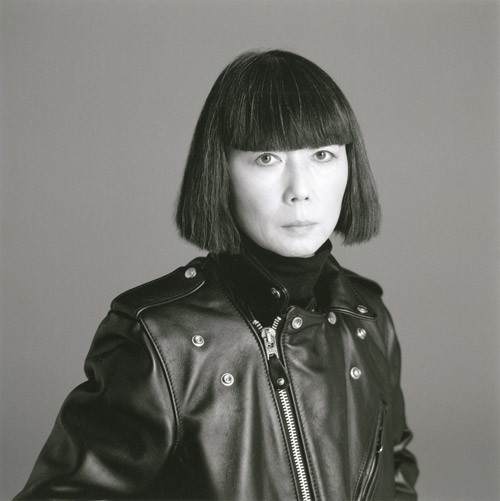
“There’s no doubt that art, particularly twentieth-century art, has entered popular culture,” says Martine d’Anglejan-Chatillon, head of development at the Whitechapel Art Gallery. “And knowing about art, going to openings and recognising interesting artists is one of the accessories of being in the know.”
Galleries like The Whitechapel and Saatchi are packed with young, affluent urbanites who spend sizeable chunks of their disposable incomes on clothes. That’s why a designer as commercially canny as Calvin Klein became a patron of the Dia Center, and also sponsored a Dan Flavin show there. Hugo Boss initiated the Hugo Boss Prize in 1996 because its then-chairman was an art buff, and carried on after his departure because the executives who took over were convinced it was raising awareness of the Boss label in the US.
Art doesn’t just deliver a demographically appealing group of consumers to designers, it can also sharpen the public’s perception of brands in a crowded, competitive market. When consumers choose between one product and another, they base their choice on whether it works, what it looks like and hopefully —if it’s environmentally responsible. But a fashion brand’s appeal is also coloured by our impressions of the designer’s personality. So while the Versace label conjures Hello! pictures of Gianni partying with Elton, or Donatella with Courtney Love, Alexander McQueen is seen as the crazy London dubber who is obsessed with falconry. If we like those images we might buy the designer’s clothes; if not, we probably won’t.
]]>
